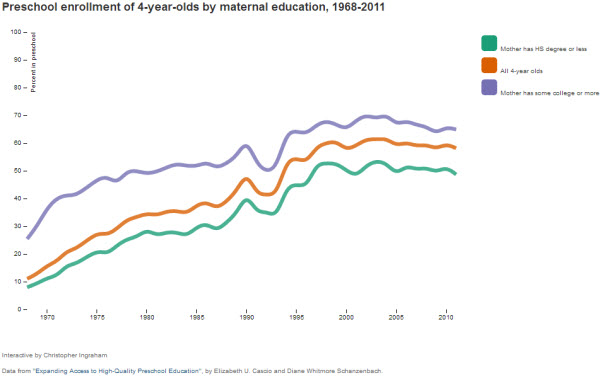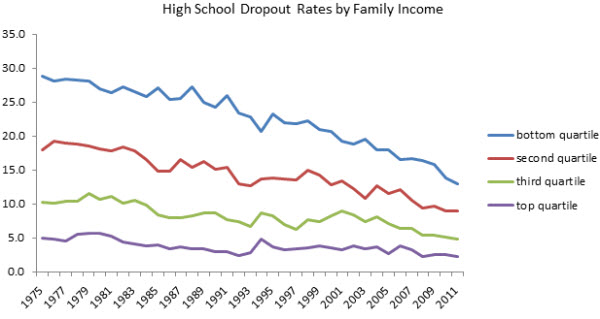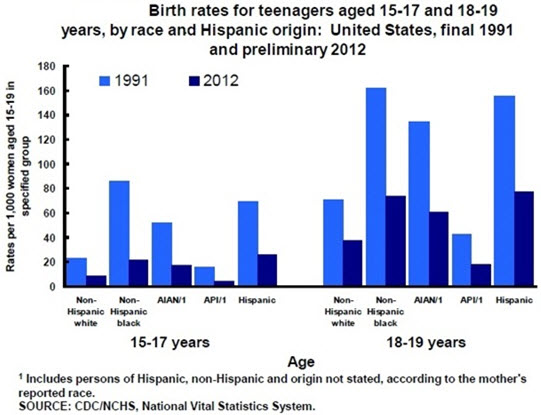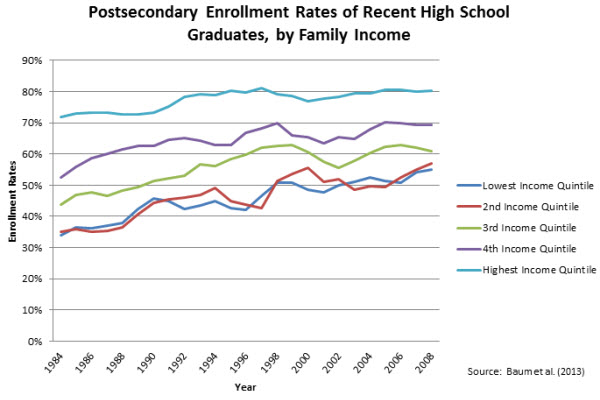Social mobility studies can sometimes, like economics, be a dismal science: the barriers to opportunity are high, and hard to lower. But it is far from all bad news. So in the spirit of Thanksgiving, here are six social mobility trends to give us some cheer:
1. Salt Lake City is like Denmark, Mobility-Wise
In terms of intergenerational mobility, the U.S. generally doesn’t rank well against other developed countries. In Denmark, for instance, 14% of men whose fathers are in the bottom fifth of the earnings distribution make their way into the top earnings quintile – compared to just 8% in the U.S.
Recent research, however, shows that some regions are getting close to European levels of intergenerational mobility. In Salt Lake City, the most economically mobile of U.S. metro areas, 11.5% of children born into the bottom income quintile climb into the top income quintile by adulthood. In mobility terms, it is a slice of Scandinavia.

Reuters/George Frey: Salt Lake City skyline
Reuters/Ints Kalnins: Stockholm
2. Four Times as many Disadvantaged Four Year-Olds in Preschool
Preschool has been found by many researchers to improve later life outcomes, by building both cognitive skills (smarts) and non-cognitive skills (drive and grit). Compared to 1970, rates of pre-school enrollment among 4 year-olds have quadrupled to break the 50% mark. The rise has been equally marked among the children of well-educated and less-educated mothers (although a gap remains):

3. Half as Many Poor Teens Dropping Out of High School
Since 1975, the proportion of young adults failing to complete high school has dropped sharply. And the fall in drop-out rates has been especially marked among the lowest-income groups, declining from 28% to 13% for the poorest quarter of the population:

Source: Digest of Education Statistics, Table 129 using Current Population Survey data. Note: Dropout rates are the percentage of high school dropouts (persons who are not enrolled in school and have not completed a high school program) among persons age 16 through 24.
4. Teen Birth Rates Haven’t Been This Low Since 1940
Teen birth rates continue to fall—and have fallen continuously since 1991. In just one year, between 2011 and 2012, the birth rate among women 15 to 19 dropped by 6%. Great news, since we know that teen moms are less likely to finish school, less likely to ever get married, more likely to have other children outside of marriage, and more likely to have low incomes.

5. Twenty Percent More Low-Income Kids Going to College
Postsecondary enrollment rates have increased by more than 20 percentage points for recent high school graduates from the bottom fifth (quintile) of the income distribution, over the last three decades. At the same time, the postsecondary enrollment gap between students from the highest and lowest income quintiles has shrunk by 13 percentage points:

6. Social Mobility: A Search Term on the Rise
There is growing interest in the issue of social mobility in the US, among politicians, policy-makers and the general public. Given that improving rates of social mobility is a long-term, complex policy goal, the more interest the better. Here’s the trend in the number of people searching “social mobility” via Google over the last six years:
Google search interest over time for the term “social mobility” in the United States

Note: Numbers represent search interest relative to the highest point on the chart, not absolute search volume. Interest is shown here for November 2006 to November 2013.
Increasing the rate of social mobility is a central challenge for the U.S. There are plenty of reasons to worry about trends in mobility, but signs of progress, too. Happy Thanksgiving!


Commentary
Six Social Mobility Trends to Give Thanks For
November 26, 2013